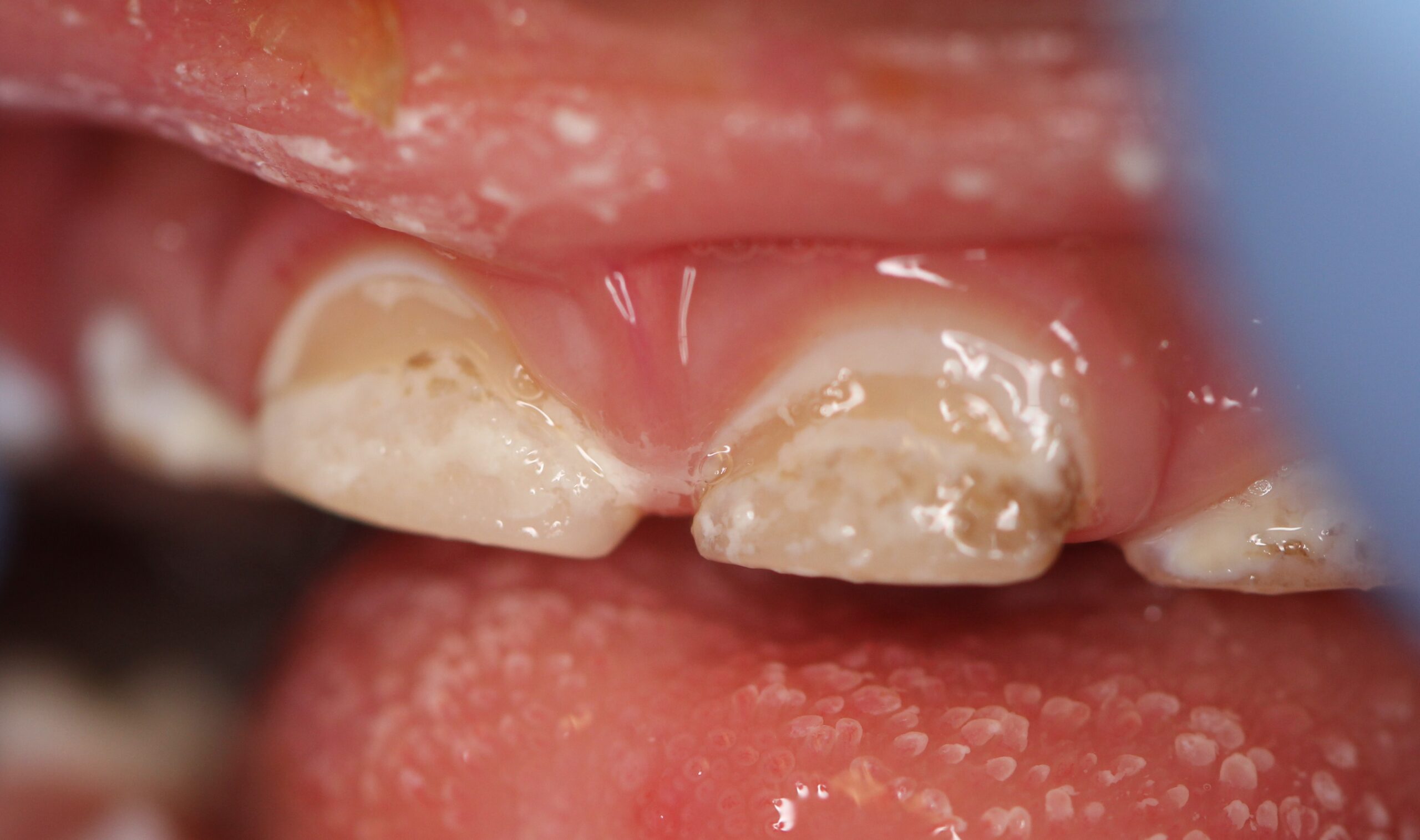
The appearance of a child’s first teeth is often met with excitement, a milestone marking a new stage of development. These tiny, pearly whites, often called “baby teeth” or “primary teeth,” might seem temporary given their eventual replacement by permanent ones. This transient nature, however, often leads to a misconception: that cavities in baby teeth are inconsequential, easily dismissed because they’ll just fall out anyway. This couldn’t be further from the truth. The health of primary teeth plays a far more critical role in a child’s overall development and future oral health than many realize. Neglecting decay in these seemingly disposable teeth can set off a chain reaction of problems, impacting not just their oral cavity but also their ability to eat, speak, and even their self-esteem. The need for fillings in baby teeth isn’t merely a preventative measure for pain; it’s an investment in the long-term health and well-being of a developing child. Ignoring decay in primary teeth is akin to ignoring cracks in the foundation of a house, simply because you plan to renovate later. The immediate and future implications demand a closer look at why these small teeth require such diligent care.
Primary Teeth as Space Holders: A Crucial Role in Alignment
One of the most understated yet profoundly important functions of baby teeth is their role as space holders, serving a crucial role in alignment. Each primary tooth acts as a guide for its successor, the permanent tooth developing beneath the gums. When a baby tooth is lost prematurely due to extensive decay or infection, the adjacent teeth can shift into the vacant space. This shift can obstruct the path of the emerging permanent tooth, leading to crowding, misalignment, or even impaction of the adult tooth, meaning it gets stuck and cannot erupt properly. Think of it like a meticulous parking lot; if one car leaves too early, others might quickly fill its spot, leaving no room for the next designated vehicle. Maintaining the integrity of baby teeth ensures that the natural pathway for permanent teeth remains clear, allowing them to erupt into their correct positions. This meticulous space management by primary teeth significantly influences the need for orthodontic intervention later in life, underscoring their irreplaceable role in orchestrating a healthy and aligned permanent dentition.
Preventing Pain and Infection: Beyond Discomfort, Systemic Risks
The immediate and most apparent reason for treating cavities in baby teeth is to prevent pain and infection, going beyond discomfort to address systemic risks. Untreated decay can lead to significant toothaches, making it difficult for a child to eat, sleep, and concentrate in school. The pain can be debilitating, impacting their daily life and overall disposition. More critically, a cavity that progresses can lead to an infection or abscess within the tooth, which can spread to the surrounding bone and soft tissues. This infection can cause swelling, fever, and, in severe cases, even affect a child’s general health, potentially spreading to other parts of the body. An abscessed baby tooth can also damage the developing permanent tooth underneath, leading to enamel defects or malformation of the adult tooth. Treating cavities promptly with fillings halts the progression of decay, alleviating pain and, more importantly, preventing these potentially serious infections that pose systemic risks to a child’s developing body.
Aiding Chewing and Nutrition: Fueling Growth and Development
A less obvious but equally vital function of healthy baby teeth is aiding chewing and nutrition, effectively fueling growth and development. Children rely on their primary teeth to bite and chew a variety of foods, essential for proper digestion and nutrient absorption. When teeth are decayed or painful, children naturally avoid using them or favor softer, less nutritious foods. This restricted diet can lead to nutritional deficiencies, impacting their physical growth, energy levels, and even cognitive development. Imagine a child unable to properly chew crunchy fruits and vegetables; they might miss out on essential vitamins, minerals, and fiber. Good chewing function also stimulates saliva flow, which aids in digestion and helps clean the mouth. Ensuring baby teeth are healthy and functional means a child can enjoy a diverse, nutrient-rich diet, providing the necessary building blocks for their rapidly growing bodies. The ability to chew effectively directly translates into robust growth and development, making healthy primary teeth indispensable for a child’s physical well-being.
Impact on Speech Development: Articulation and Clarity
The presence and proper alignment of baby teeth also have a significant impact on speech development, influencing articulation and clarity. Teeth play a crucial role in forming sounds, particularly those involving the tongue and lips (e.g., ‘s’, ‘th’, ‘f’, ‘v’). Missing or decayed front teeth can affect a child’s ability to pronounce certain words clearly, leading to speech impediments or lisps. This can be a source of frustration for the child and may even impact their confidence in social interactions or school. While speech therapy can help, addressing the underlying dental issue through fillings or other appropriate treatments is often a necessary first step in correcting speech problems. Maintaining healthy, intact baby teeth provides the necessary scaffolding for proper tongue placement and airflow during speech, facilitating clear articulation and clarity in communication.
Fostering Positive Oral Habits: A Foundation for Life
Beyond the immediate physical benefits, treating baby teeth cavities contributes significantly to fostering positive oral habits, laying a foundation for life. When children experience pain or discomfort due to untreated decay, they may develop a fear of dental visits, making future care more challenging. Conversely, a positive experience with a filling, where pain is alleviated and the tooth is saved, can help build trust in dental professionals and reinforce the idea that dental care is beneficial. This early exposure to successful treatment can prevent the development of dental phobia. Moreover, if a child learns that cavities are treated, it underscores the importance of maintaining good oral hygiene to prevent future issues. This tangible consequence of neglect and the positive outcome of intervention can be powerful motivators, instilling a sense of responsibility for their own oral health that can last a foundation for life.
Protecting Permanent Teeth: Guarding Future Smiles
One of the most direct benefits of filling baby teeth is protecting permanent teeth, essentially guarding future smiles. As mentioned, an infection in a primary tooth can spread to the developing permanent tooth bud beneath it, leading to various issues. This can range from enamel defects, where the new tooth emerges with rough, discolored, or pitted surfaces, to more severe developmental disturbances. Such damage can make the permanent tooth more susceptible to decay, sensitivity, and aesthetic concerns. By treating cavities in baby teeth, we eliminate the source of infection, creating a healthier environment for the underlying permanent teeth to develop unimpeded. This proactive approach ensures that when the permanent teeth finally erupt, they have the best possible chance of being strong, healthy, and free from early developmental defects, effectively guarding future smiles from preventable damage.
Maintaining Self-Esteem: Confidence in Their Smile
The visible impact of untreated decay, especially in front teeth, can significantly affect a child’s self-esteem, influencing their confidence in their smile. Decayed or discolored teeth can lead to teasing from peers, making children self-conscious about smiling, laughing, or even speaking. This social stigma can impact their participation in school activities and their overall social development. Children, even at a young age, are highly aware of their appearance and the perceptions of others. Providing fillings to restore the appearance and function of decayed baby teeth can dramatically improve a child’s confidence, allowing them to smile freely and interact without embarrassment. A healthy smile isn’t just about physical health; it’s about fostering a sense of well-being and contributing to a child’s positive self-image and confidence in their smile as they grow.
Preventing Widespread Decay: Halting the Spread
Allowing a single cavity in a baby tooth to go untreated can quickly lead to preventing widespread decay, effectively halting the spread of bacteria. The bacteria responsible for tooth decay don’t stay confined to one tooth; they can easily spread to adjacent teeth and even to newly erupted permanent teeth. If the oral environment is consistently acidic and laden with decay-causing bacteria due to untreated cavities, other teeth become more vulnerable. Treating a cavity early is like putting out a small fire before it engulfs the entire forest. It reduces the bacterial load in the mouth and helps restore a healthier pH balance, making it less likely for new cavities to form. This strategic intervention is key to halting the spread of dental problems throughout the child’s mouth, safeguarding the entire dentition from a cascading effect of decay.
The Role of Early Intervention: Long-Term Benefits
The principle of early intervention is paramount when it comes to baby teeth, yielding substantial long-term benefits. Addressing cavities as soon as they are detected prevents them from growing larger, becoming more painful, or leading to more complex problems requiring extensive and potentially more traumatic treatments like extractions or root canals on baby teeth. Early fillings are typically simpler, less invasive, and more comfortable for the child. Proactive treatment also establishes a pattern of good dental care and regular check-ups, embedding these practices into a child’s routine from a young age. This foundational approach to dental health reduces the likelihood of severe dental issues in adolescence and adulthood, leading to fewer dental emergencies and lower overall dental costs over a lifetime. It’s an investment in long-term benefits that extend far beyond the temporary lifespan of a baby tooth.
A Holistic View: Beyond the Tooth, the Whole Child
Ultimately, treating baby teeth cavities requires a holistic view, looking beyond the tooth to consider the whole child. It’s not just about repairing a single tooth; it’s about preserving chewing function, promoting proper speech, ensuring space for permanent teeth, preventing pain and infection, maintaining self-esteem, and establishing positive dental habits. Every aspect of a child’s development—physical, emotional, and social—can be influenced by the health of their primary teeth. Neglecting them implies a narrow focus on their transient nature, overlooking their profound and interconnected roles in a child’s overall well-being. Recognizing that healthy primary teeth are integral to a healthy childhood means understanding that investing in their care is an investment in the entirety of the child, fostering a foundation for a lifetime of health and happiness.
